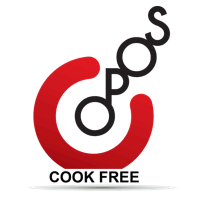Techniques – #W for Waterless Cooking



Water is the biggest enemy of cooking. Water causes mushiness. Water dilutes taste and flavour. We’ve long known that cooking food in its own juices is the key to flavourful, tasty, texture filled food. In traditional cooking methods like stir frying or grilling, we are able to produce non-mushy, intensely flavoured food by eliminating water.
But waterless cooking is frowned upon by all pressure cooker manufacturers. They insist you add atleast 1 cup of water for every 10 minutes of cooking time and never, ever cook without water. Using so much water turns everything mushy. The manufacturer’s instructions limited the use of pressure cookers to mushy items like rice, dal, kichidi and potatoes. Before OPOS, controlling texture to make a crunchy vegetable curry, aldente pasta, a non-mushy biriyani or noodles was not possible in a pressure cooker. So, in many households, Pressure cooking was seen as a necessary evil, a lazy way to cook, and was frowned upon.
We realised minimising/ eliminating water is the key to a grainy texture. But we were also worried, as every single manufacturer warns us to never, ever, to cook without added liquid!
Science tells us that 1 part of water turns to over 1700 parts of steam. This means it would take just 2tsp water to comfortably pressurise the 2L pot with steam. Some members were bold enough to actually test and validate the theory by pressurising a 2L pressure cooker with just 2tsp water.
We theorised that even this tiny bit of water need not be added, but can come from the food itself, as most foods are mostly water!
a. Watery vegetables like tomato/ cucumber/zucchini are nearly 95% water.
b. Even vegetables that appear non watery, like Cauliflower, eggplant or cabbage are nearly 90% water.
c. Starchy vegetables like potato, which appear dry are actually 80% water.
d. Most meats are 75% water.
e. Seafood is over 80% water.
f. Even dehydrated foods like raisins have over 15% water.
We tried to use food’s own juices to generate enough steam to pressurise the cooker without any added liquid. We hoped cutting out added water will replicate stir frying and result in better textures. It did!
Thus, we began the tentative experiments with no water cooking. After hundreds of experiments, the first tentative waterless recipe for vegetables was proposed. It did not result in better colour, as that demanded high heat in addition to using no water.(PressureBaking was still an year away).
At this time, we were not confident to start cooking both without water and at high heat. But we noticed that the flavours were intense, texture was firm and this was a road worth exploring.
The goal of all waterless cooking is to ensure enough steam is generated from the food’s own juices to pressurise the cooker as fast as possible, in less than 3 minutes or so. Else burning is likely. We ensure fast steam generation by the appropriate heat settings, by balancing the proportion of wet and dry ingredients used, by layering watery food stuffs/ a buffer at the bottom and by ensuring no leakage.
Waterless cooking soon became a core OPOS technique. We soon spotted a paradox. We found cooking at high heat minimises burning, and cooking at meidum / sim promotes burning. We later found that this happens because while cooking at low heat, pressure buildup is delayed, as steam keeps leaking out. Quick pressure buildup in around 3 minutes or so was mandatory to avoid burning. This requires high heat. Slowly we coupled waterless cooking with high heat and magic happened- PressureBaking was born!
Waterless cooking became the norm for heightened flavour and texture. More members started getting comfortable with cutting out water. In lesson 2, water was optionally replaced by oil to convert all recipes into their equivalent stir-fried/ shallow fried versions.
